Coronavirus: Can masks and ventilation stop COVID-19 spread better than social distancing? Here's what study suggests
#WORLDHEALTHDAY Mumbai doctors tell us how to stay healthy
AutHer Awards: JK Paper & The Times of India celebrate women authors yet again
My COVID Story 2021: My platelet count was dropping
Older adults share their COVID vaccine experience
Coronavirus: Can masks and ventilation stop COVID-19 spread better than social distancing? Here's what study suggests
Coronavirus: Can masks and ventilation stop COVID-19 spread better than social distancing? Here's what study suggests

Since the outbreak of the novel coronavirus, authorities and medical professionals are urging the use of face masks and sanitizers in and around the world. Social distancing has become a norm and is being practiced at large. However, while weighing the effectiveness of one measure over the other, scientists have found that masks and proper ventilation can stop the spread of COVID-19 infections better than social distancing, especially in indoor spaces, where airborne transmission of the deadly virus is facilitated.
Risks of airborne COVID-19 transmission
COVID-19 is a respiratory illness that spreads through droplets in people's coughs and sneezes. It is caused by the dissemination of aerosols that remain infectious when suspended in air over long distances and time.
Therefore, being with an infected person in a closed indoor space poses greater risks to your health and increases your chances of catching COVID-19 virus. While the person may not be aware of his condition, when they cough or sneeze, they're likely to contaminate the surfaces they touch, which when touched by others can cause the spread of COVID-19.
Airborne transmission can pose greater COVID-19 risks in indoor spaces
The viral transmission of COVID-19 through airborne microdroplets has been in discussion for a long time now. In contrast to the respiratory droplets while sneezing or coughing, airborne transmission can pose greater harm to people indoors. As the novel coronavirus has the tendency to remain in the surroundings for a long period of time, it makes enclosed spaces all the more dangerous and infectious than outdoor areas. However, experts are yet to determine the risks posed by airborne transmissions.
Are masks and good ventilation more effective in containing COVID-19 spread?
Whether you're indoors or outdoors, precautionary measures remain the same for both. From maintaining social distance to wearing masks and disinfecting surfaces, one must follow all these guidelines for the safety of others and oneself. However, according to the Centers for Disease Control and Prevention (CDC), good ventilation and devices that maximize airflow can also prevent COVID-19 from spreading indoors.
According to study
As per a study published in the journal Physics of Fluids, researchers found that masks and a good ventilation system are more crucial and provides better results than social distancing for containing the airborne spread of COVID-19 infections indoors. The scientist prepared a computer model of a classroom with students and a teacher and then facilitated airflow and disease transmission, and calculated the risks of airborne transmission.
In the model, where the classroom was 709 square feet with 9-foot-tall ceilings, students were masked and the teacher at the front of the class also wore a mask.
"The study finds that aerosol transmission routes do not display a need for six feet social distancing when masks are mandated," said Michael Kinzel, an assistant professor at the University of Central Florida in the US.
According to Kinzel, "The research is important as it provides guidance on how we are understanding safety in indoor environments."
Similarly, the team of researchers evaluated a ventilated classroom and an unventilated one. The researchers found that a ventilation system with a good air filter minimized the risk of infection by 40 to 50 percent as compared to a classroom with no ventilation.
Bottomline
While the study suggests that masks and good ventilation can be more effective than social distancing in stopping the spread of COVID-19 infections, it is important that we practice social distancing too. Especially at a time when COVID-19 cases are at a surge, following all health measures are crucial to contain the spread of the virus. Simultaneously, keep wearing well-fitted masks and facilitate a good ventilation system at your homes.
Risks of airborne COVID-19 transmission
COVID-19 is a respiratory illness that spreads through droplets in people's coughs and sneezes. It is caused by the dissemination of aerosols that remain infectious when suspended in air over long distances and time.
Therefore, being with an infected person in a closed indoor space poses greater risks to your health and increases your chances of catching COVID-19 virus. While the person may not be aware of his condition, when they cough or sneeze, they're likely to contaminate the surfaces they touch, which when touched by others can cause the spread of COVID-19.
Airborne transmission can pose greater COVID-19 risks in indoor spaces
The viral transmission of COVID-19 through airborne microdroplets has been in discussion for a long time now. In contrast to the respiratory droplets while sneezing or coughing, airborne transmission can pose greater harm to people indoors. As the novel coronavirus has the tendency to remain in the surroundings for a long period of time, it makes enclosed spaces all the more dangerous and infectious than outdoor areas. However, experts are yet to determine the risks posed by airborne transmissions.
Are masks and good ventilation more effective in containing COVID-19 spread?
Whether you're indoors or outdoors, precautionary measures remain the same for both. From maintaining social distance to wearing masks and disinfecting surfaces, one must follow all these guidelines for the safety of others and oneself. However, according to the Centers for Disease Control and Prevention (CDC), good ventilation and devices that maximize airflow can also prevent COVID-19 from spreading indoors.
According to study
As per a study published in the journal Physics of Fluids, researchers found that masks and a good ventilation system are more crucial and provides better results than social distancing for containing the airborne spread of COVID-19 infections indoors. The scientist prepared a computer model of a classroom with students and a teacher and then facilitated airflow and disease transmission, and calculated the risks of airborne transmission.
In the model, where the classroom was 709 square feet with 9-foot-tall ceilings, students were masked and the teacher at the front of the class also wore a mask.
"The study finds that aerosol transmission routes do not display a need for six feet social distancing when masks are mandated," said Michael Kinzel, an assistant professor at the University of Central Florida in the US.
According to Kinzel, "The research is important as it provides guidance on how we are understanding safety in indoor environments."
Similarly, the team of researchers evaluated a ventilated classroom and an unventilated one. The researchers found that a ventilation system with a good air filter minimized the risk of infection by 40 to 50 percent as compared to a classroom with no ventilation.
Bottomline
While the study suggests that masks and good ventilation can be more effective than social distancing in stopping the spread of COVID-19 infections, it is important that we practice social distancing too. Especially at a time when COVID-19 cases are at a surge, following all health measures are crucial to contain the spread of the virus. Simultaneously, keep wearing well-fitted masks and facilitate a good ventilation system at your homes.
End of the article
Comments (0)
Featured in Health & Fitness
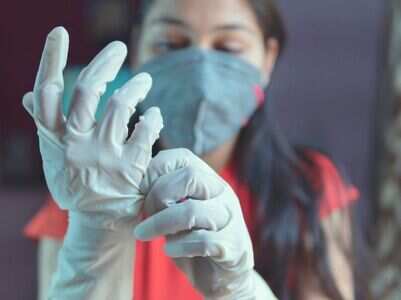
Masks and ventilation more effective against COVID spread
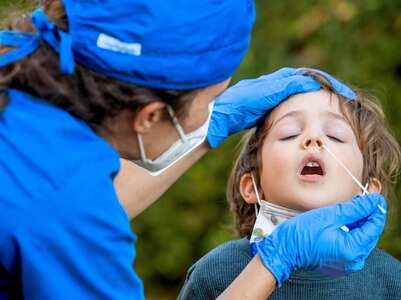
Is the second COVID wave more dangerous for kids?

Five simple exercises to reduce face fat

Should you stretch before or after a workout?

10 SIMPLEST things for better health

How the second COVID wave differs from the first
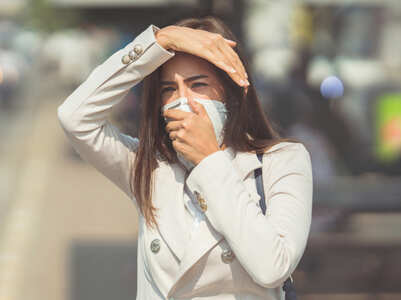
Newer symptoms of COVID infection identified

What are its benefits of having Triphaladaily

"Boiled eggs and chicken helped me drop 16 kgs"
LATEST VIDEOS
Health-Fitness
 Reasons for premature menopause and its health implications03:05
Reasons for premature menopause and its health implications03:05 10 Minute Abs Workout Fat Burning HIIT! (Level 3)12:09
10 Minute Abs Workout Fat Burning HIIT! (Level 3)12:09 Home Workout Strength & Fat Burning (Level 4.5)26:11
Home Workout Strength & Fat Burning (Level 4.5)26:11 Yoga poses to manage diabetes04:03
Yoga poses to manage diabetes04:03 Yoga postures to ease back pain and correct posture01:59
Yoga postures to ease back pain and correct posture01:59 If you are oversleeping and want to stop doing it, then here's what you need to do00:43
If you are oversleeping and want to stop doing it, then here's what you need to do00:43 Intermittent fasting00:10
Intermittent fasting00:10 #Lifelineseries Toxic Positivity: What is it and how it affects us?07:19
#Lifelineseries Toxic Positivity: What is it and how it affects us?07:19 Not hydrating00:10
Not hydrating00:10 5 Healthy habits for optimum work-life balance in entrepreneurs00:35
5 Healthy habits for optimum work-life balance in entrepreneurs00:35
StoriesSEE All





































































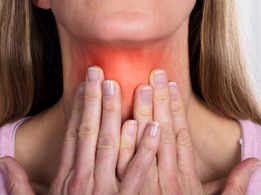
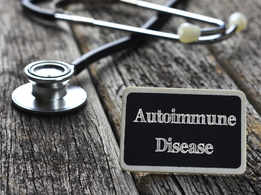



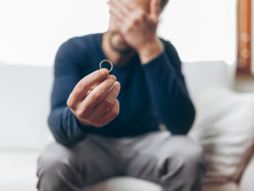















![[New!] Level 4 - 30 minute tempo fat-burning!
[New!] Level 4 - 30 minute tempo fat-burning!](https://static.toiimg.com/thumb/79327298.cms?width=147&height=86)















closecomments
SIGN IN WITH
FacebookGoogleEmail